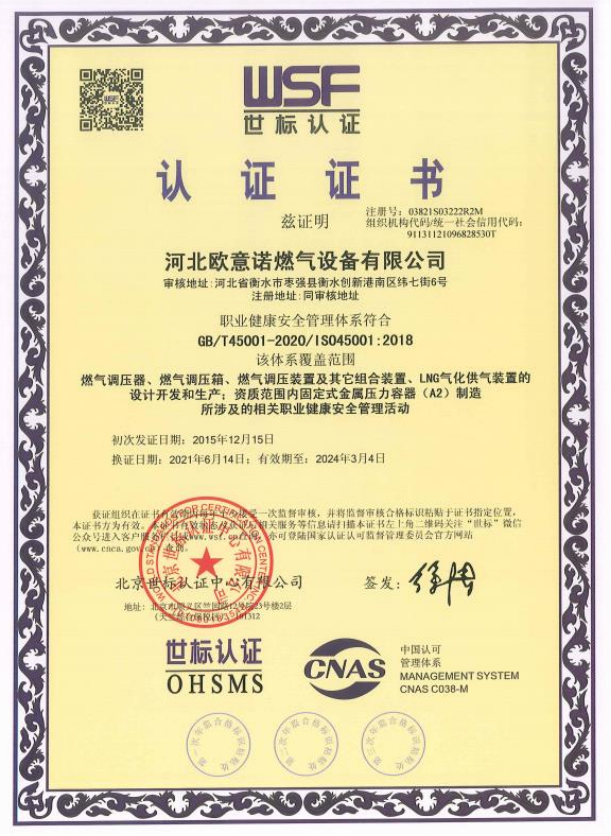
Sep . 07, 2024 05:38
Back to list
Gas Pressure Vessel - Safe and Efficient Solutions for Gas Storage
Understanding Gas Pressure Vessels An Overview
Gas pressure vessels play a crucial role in various industrial applications, providing a safe and efficient way to store and manage gases under pressure. These vessels are typically used in industries such as oil and gas, chemical manufacturing, and energy production. This article provides an overview of gas pressure vessels, their construction, applications, and safety considerations.
What is a Gas Pressure Vessel?
A gas pressure vessel is a container designed to hold gases at a pressure substantially different from the ambient pressure. These vessels are engineered to withstand the internal pressure exerted by the gas, which can vary depending on temperature and other environmental factors. They can be constructed from various materials, including steel, aluminum, and composite materials, depending on the specific needs of the application.
Design and Construction
.
Applications of Gas Pressure Vessels
وعاء ضغط الغاز

Gas pressure vessels find applications across a wide range of industries. In the oil and gas sector, they are used to store natural gas and other gases safely until they can be delivered to consumers or processed further. In chemical manufacturing, pressure vessels are essential for processes that involve reactions under pressure, such as polymerization or gasification. Additionally, in the energy sector, they are utilized in power plants for gas storage and management.
Safety Considerations
Given the potential hazards associated with high-pressure gases, safety is a paramount concern when it comes to the operation of gas pressure vessels. Regular inspections, maintenance, and testing are essential to ensure that these vessels remain in good condition and do not pose a risk of leakage or explosion. Safety valves and pressure relief systems are typically incorporated into designs to mitigate the risks associated with overpressure situations.
Furthermore, operators must be adequately trained in handling and managing these vessels to ensure that safety protocols are followed. Emergency response plans should also be in place to address potential incidents involving gas pressure vessels.
Conclusion
Gas pressure vessels are critical components in various industrial settings, providing a safe means of storing and managing gases under pressure. Their design and construction require careful consideration to meet safety standards and operational needs. As industries continue to evolve and innovate, gas pressure vessels will remain an essential part of the infrastructure that supports modern gas-related processes, underscoring the importance of ongoing advancements in engineering and safety practices.
Latest news
-
Safety Valve Spring-Loaded Design Overpressure ProtectionNewsJul.25,2025
-
Precision Voltage Regulator AC5 Accuracy Grade PerformanceNewsJul.25,2025
-
Natural Gas Pressure Regulating Skid Industrial Pipeline ApplicationsNewsJul.25,2025
-
Natural Gas Filter Stainless Steel Mesh Element DesignNewsJul.25,2025
-
Gas Pressure Regulator Valve Direct-Acting Spring-Loaded DesignNewsJul.25,2025
-
Decompression Equipment Multi-Stage Heat Exchange System DesignNewsJul.25,2025

